Abundance: common
What: buds, flowers, young seed pods, seeds
How: raw or cooked in soups and stews, tea/drink
Where: sunny, arid land
When: Spring, summer.
Nutritional Value: sugar, protein, minerals
Other uses: extremely hot and fragrant firewood
Dangers: These can occasionally contain toxic, bitter tasting compounds. Only use sweet-tasting honey locusts.
Honey locust spines on trunk of tree. Note how the spines have spines!
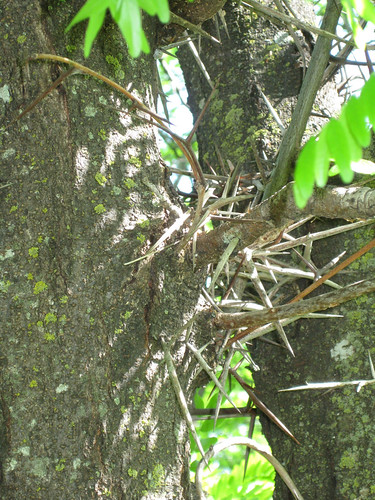

Honey locust leaf, compound in structure. Each of the ovals is a single leaflet portion of the full leaf.
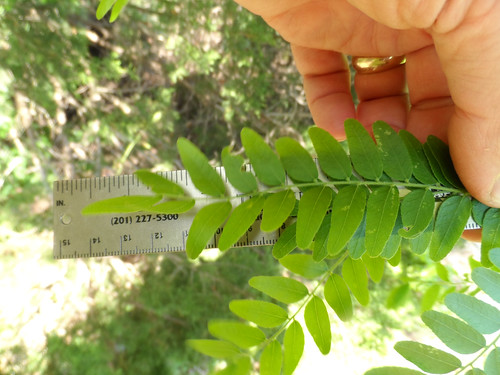
Honey locust spines on branches along with flowers.
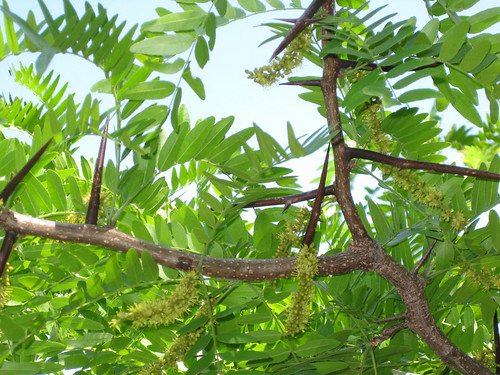
Close-ups of very young honey locust seed pods.

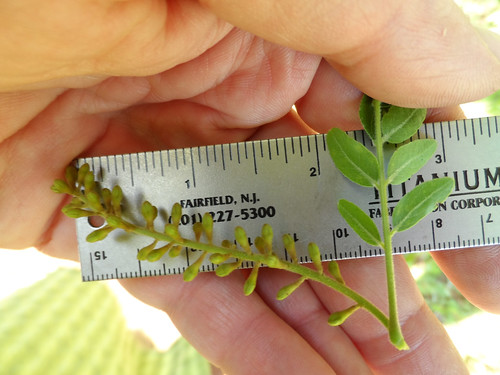
Close-up of honey locust spine.
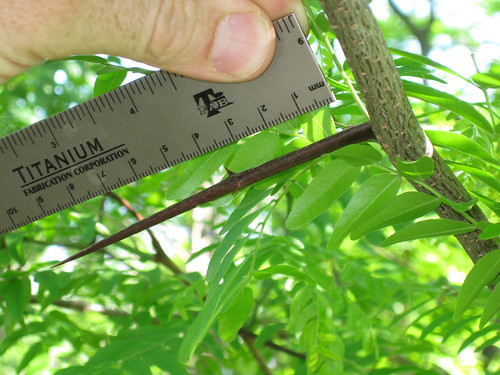
Almost mature Honey Locust pods. At this point they can be collected for the taste good they contain.

Mature honey locust seed pod. Eat the yellow/orange "goo" between the hard seeds.
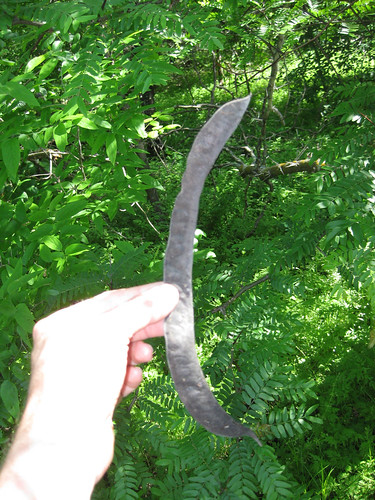
Size 12 foot next to fallen Honey Locust seedpods.
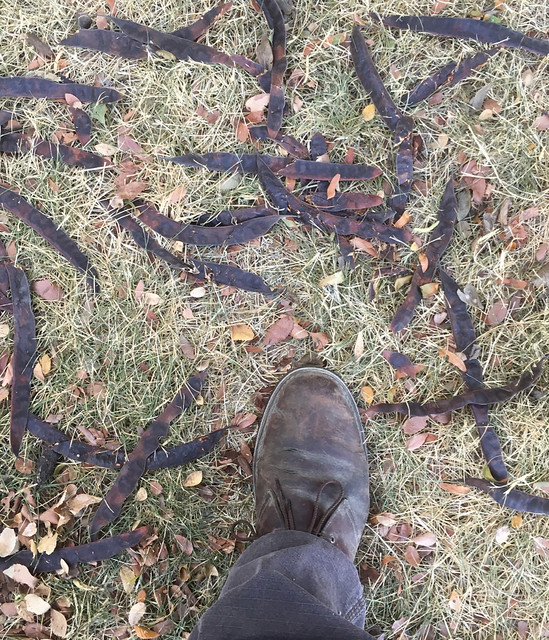
Texas distribution, attributed to U. S. Department of Agriculture. The marked counties are guidelines only. Plants may appear in other counties, especially if used in landscaping.

North American distribution, attributed to U. S. Department of Agriculture.
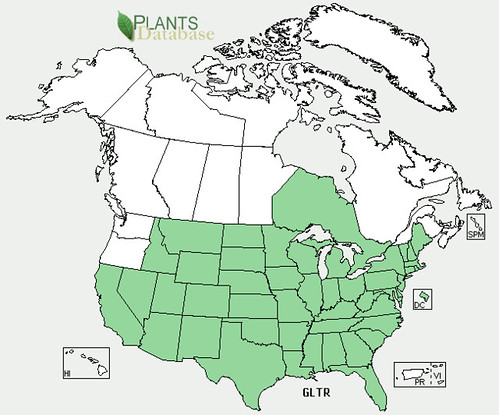
Growing to almost 100 feet tall and living up to 120 years, Honey Locust trees are distinguished...and wicked protectors of wooded areas. Their trunks and mature branches are covered with sea urchin-like clusters of spines up to four inches long! They have a broad crown that offers lovely, dappled shade during the summer. Come fall it's compound leaves turn yellow and then drop leaving the dark gray, bumpy bark to stand stark against the winter sky.
These tall, spiky trees are often found on the edges of woods and to a lesser extent in the interior. In either case it's likely they'll be surrounded by many small honey locust saplings. The springtime flowers are beloved by bees and make an excellent honey. The young, tender pods can be cooked like green beans. The yellow/gold "goo" between the seeds inside both green and mature seedpods is sweet and tastes like honey. The hard, mature seeds can be ground into a calorie rich, gluten-free flour after removing them from the long, flat pod.
Buy my book! Outdoor Adventure Guides Foraging covers 70 of North America's tastiest and easy to find wild edibles shown with the same big pictures as here on the Foraging Texas website.

